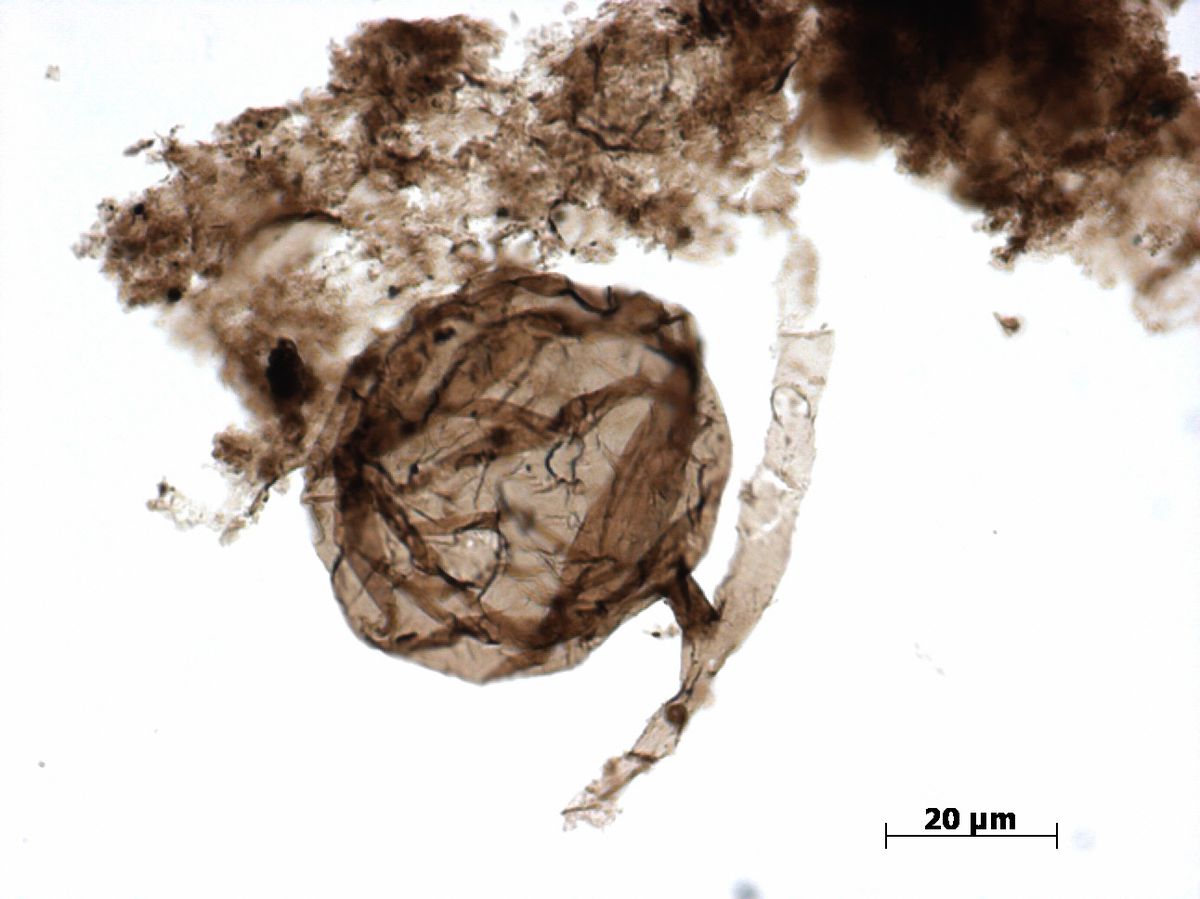
The claim is based on tiny structures and chemical clues that the team found while analyzing organic residue locked in a layer of shale that is approximately 900 million to 1 billion years old. CORENTIN LORON/HANDOUT
For thousands of years, the steep-walled canyons of Tuktut Nogait National Park in the Northwest Territories have formed a spectacular backdrop for caribou, muskox and other Arctic species.
Now, a team of Canadian and European scientists has reported that those same rock formations harbour the remains of a life form that is far more ancient: the world’s oldest fungus fossil.
The discovery opens a rare window into the early evolution of complex life. Fungi – a class of organisms that includes yeasts, moulds and mushrooms – share a common ancestor with animals and they form symbiotic partnerships with many plant species. Yet, because they lack shells, bones or other features that are easily preserved, their presence in the fossil record is almost non-existent.
Until now the oldest undisputed fungus fossil, found in Scotland, dates back 410 million years. The Canadian find, described Wednesday in the journal Nature, more than doubles that age. The claim is based on tiny structures and chemical clues that the team found while analyzing organic residue locked in a layer of shale that is approximately 900 million to 1 billion years old.
“The fact that we get a fungus that old is kind of amazing,” said Elizabeth Turner, a team member and geologist at Laurentian University in Sudbury. “There’s a huge span of fungal evolution that no one has accessed yet.”
The shale samples were collected during a series of expeditions to Tuktut Nogait beginning in 2014, led by Robert Rainbird, a scientist with the Geological Survey of Canada. The fungus fossil was not spotted until last June, when Corentin Loron, a PhD student at the University of Liège in Belgium, was working on the samples in a laboratory.
To identify the fragile fossils, Mr. Loron first had to dissolve away the surrounding rock with acid and then examine the remaining material through a powerful microscope. At one point, while a technician was refocusing the image, a telltale shape popped into view.
“This was the real moment of excitement,” Mr. Loron said.
What he saw were tiny spheres and filaments with T-shaped branches. The features are similar to those exhibited by some types of fungus found in the environment today, which develop from spores and extend filaments in search of nutrients.
Further analysis showed the fossils contained chitin, a durable, carbon-based molecule that fungi use in their cell walls. Chitin is also found in the bodies of insects, among other animals, but the samples the team collected predate the emergence of any chitin-producing form of animal life by many hundreds of millions of years.
The find pushes back the earliest possible date for the emergence of the first fungus from single-celled organisms to before one billion years ago, a time frame that is consistent with the accumulation of genetic differences between fungi and other major living groups.
Mary Berbee, a University of British Columbia mycologist who was not involved in the discovery, said that if the results hold up to scrutiny, the most likely explanation is that the team has indeed identified a form of fungus that was living during the Precambrian era.
She added that the discovery is important not only because of what it says about the evolution of fungus but because of what it implies about our own ancestry. At a cellular level, animals and fungi are more closely related to each other than to plants or to various types of micro-organisms. Therefore, the presence of a distinct fungal line at one billion years ago suggests that the split between the two groups had already taken place.
“If you see any evidence for one lineage that implies the other lineage must have been present,” Dr. Berbee said.
She said the Canadian find is likely to answer some key questions about fungus evolution, while raising many new ones. For example, while the geological evidence suggests that the fossils were deposited in a marine or estuary environment, the tiny filaments associated with the fossils would be more typical of fungus living on land.
It’s possible that the fossilized fungus may have originated on land and then been washed down into the sea, but at that point in Earth’s history – long before the arrival of terrestrial plants – areas of dry land are thought to have been largely devoid of life and nutrients.
Mr. Loron said that the next step will be to better characterize what conditions were like when the fungi were living, a task not unlike trying to imagine an alien world because Earth was such a different place.
With so little known about the history of life during that period, he added, “any small thing we learn is already filling a huge gap.”
IVAN SEMENIUK
SCIENCE REPORTER
The Globe and Mail, May 22, 2019
